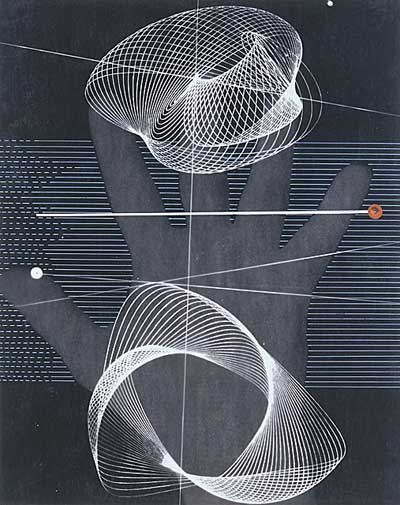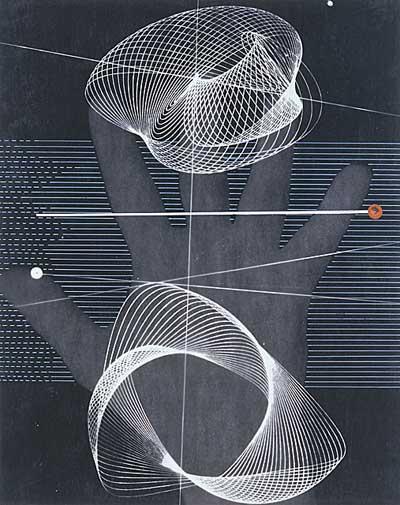One of the first photographs that caught my eye at LACMA was a print laying supine on the Photography Department's long conference table, matted and covered with parchment in anticipation of a trip to the Conservation Department. The work was a photogram with a faint image of a hand behind various linear patterns and a very auspiciously placed, but tiny, red dot.

György Kepes, Hand and Geometry, 1939
An artist friend once informed me of his theory that every good piece of art includes a tiny red dot somewhere. (Of course, he was referring to the space within the artwork, not the telltale "sold" red dot beside an artwork in a gallery). After some curious digging, the more I learned about the print's artist, György Kepes, the more apparent this work's metaphorical dot became for me.
The most intriguing thing I discovered is that Kepes was one of those artists who dove headfirst into a lifelong pursuit of unifying art and science (two of the highlights of my elementary and high school experience were the eighth grade science award and the twelfth grade art award, so to this I can relate). In 1937, he set up a Light and Color Workshop to experiment with the means of art expression at the New Bauhaus. In 1946, he joined the faculty of M.I.T., and in 1967 he founded the Center for Advanced Visual Studies in their School of Architecture to bring about the "absorption of the new technology as an artistic medium; the interaction of artists, scientists, engineers, and industry; the raising of the scale of work to the scale of the urban setting; media geared to all sensory modalities; incorporation of natural processes, such as cloud play, water flow, and the cyclical variations of light and weather; [and] acceptance of the participation of 'spectators' in such a way that art becomes a confluence."
Art at play with science. From Buckminster Fuller's geodesic domes to Rauschenberg's Experiments in Art and Technology and LACMA's Art and Technology Program to today's new culture jammers and "infosphere visionaries" curated by festivals such as last week's The Influencers, the effect of science on art and vice versa holds so much potential in my imagination.
Sarah Bay Williams, Ralph M. Parsons Fellow, Photography



